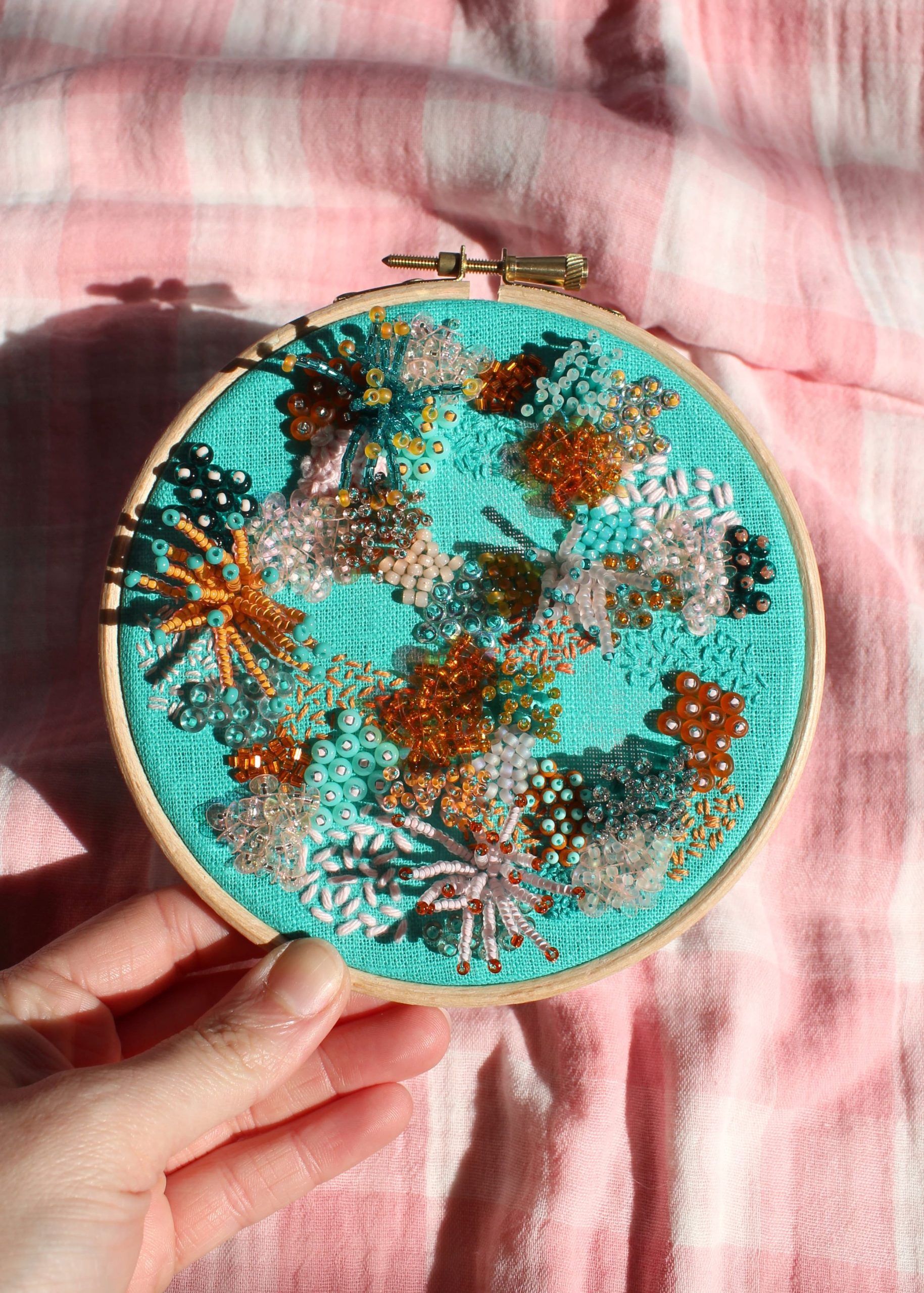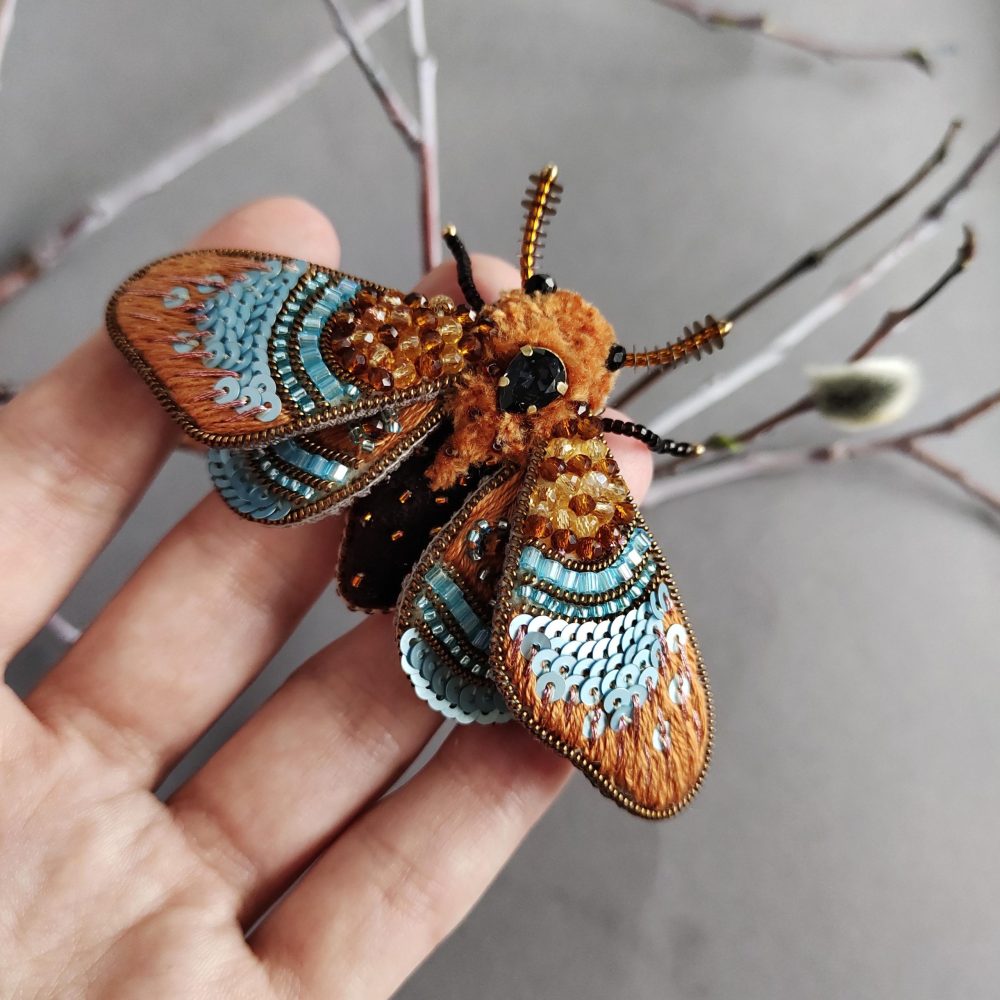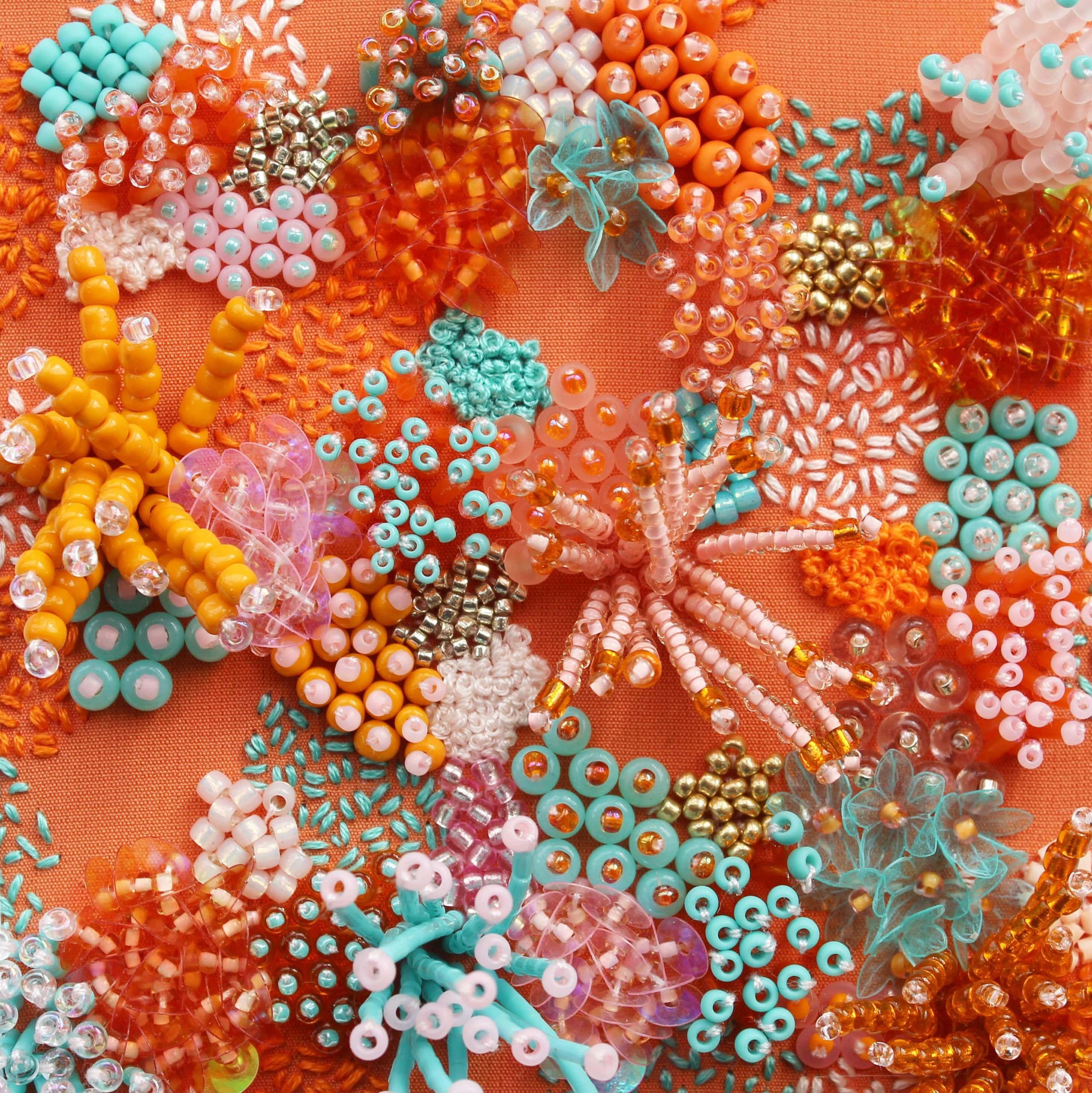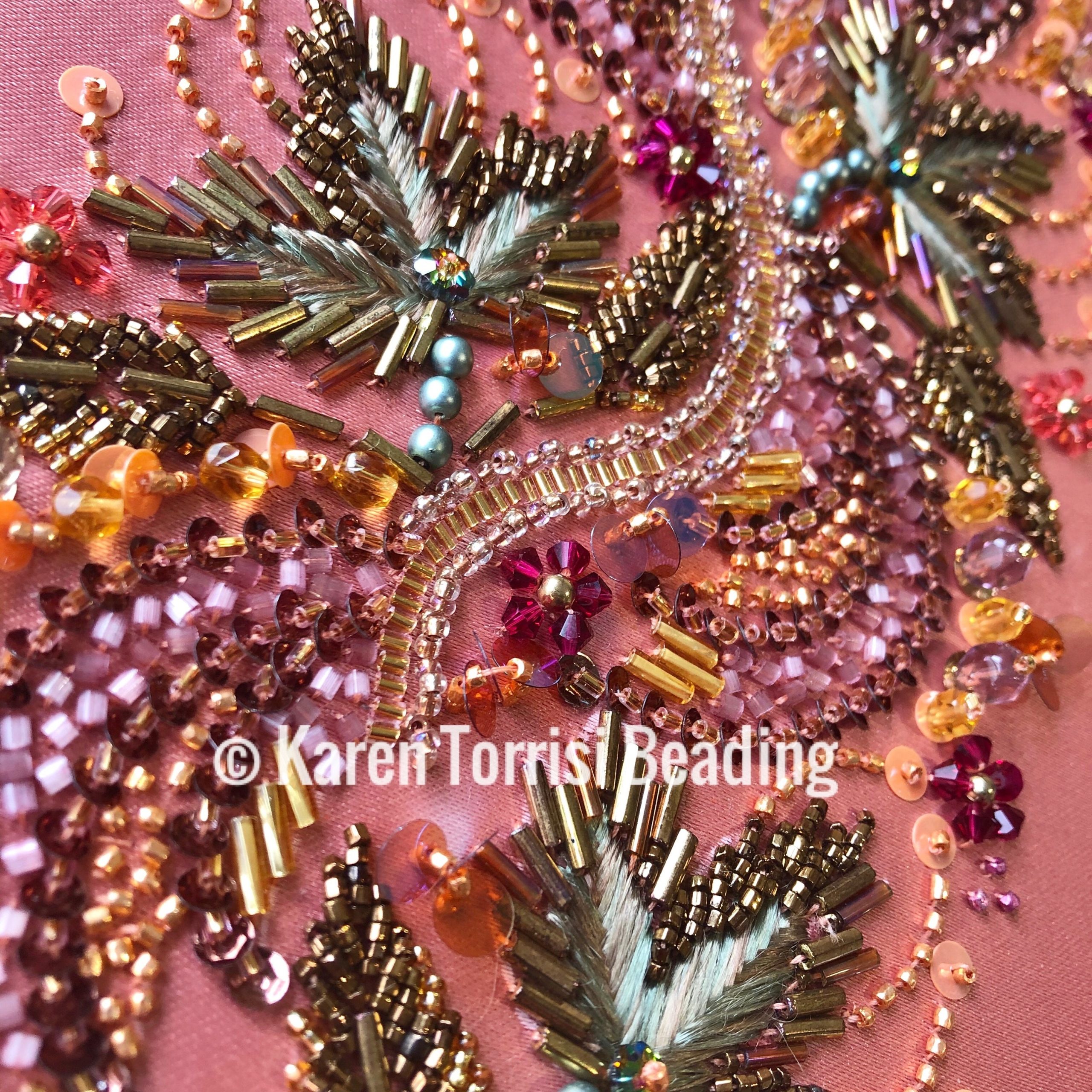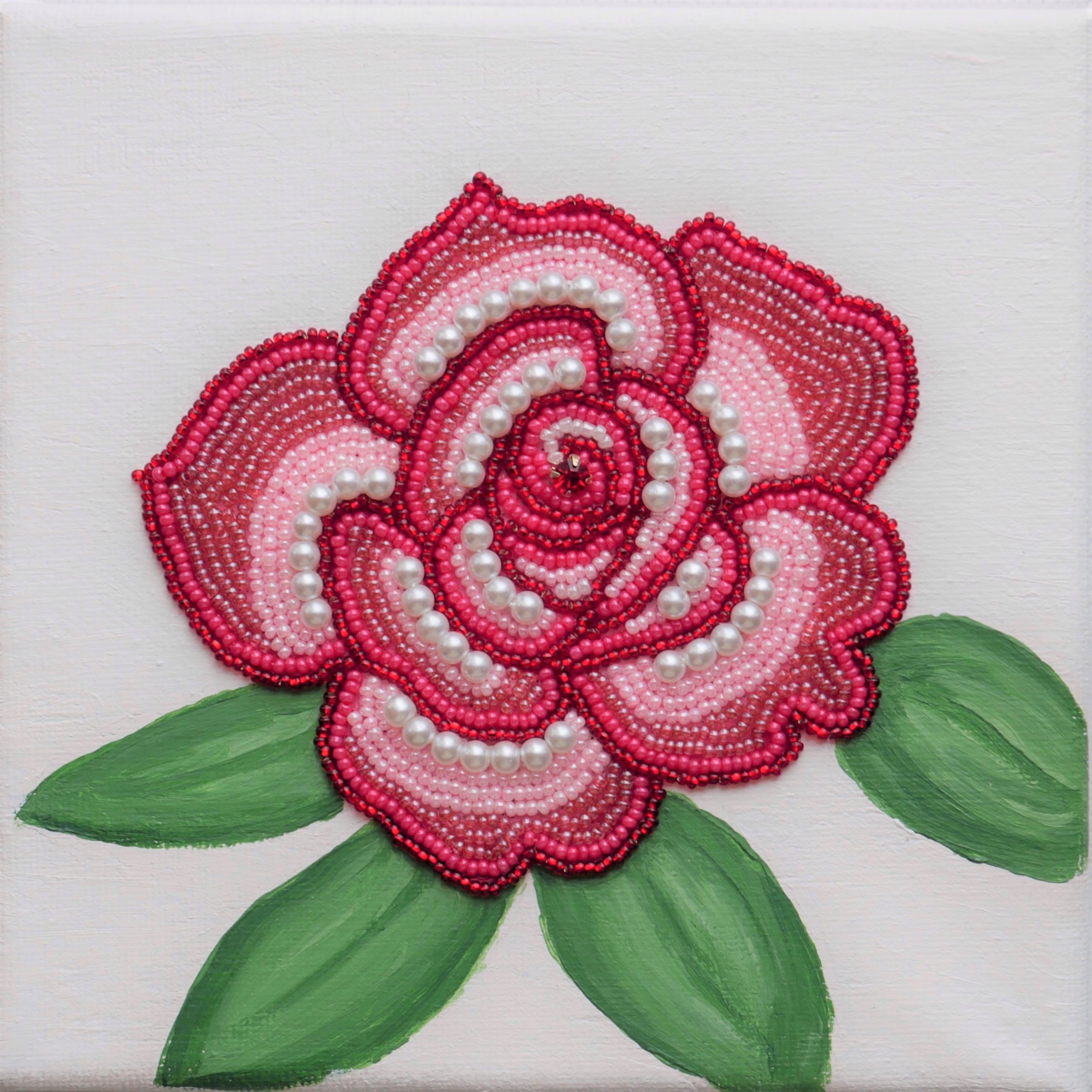Introduction
Bead embroidery is a captivating art form that merges the ancient art of embroidery with the shimmer and sparkle of beads. This intricate craft allows artists to create stunningly detailed, dimensional designs on fabric, turning ordinary pieces into extraordinary wearable art or home decor items. Whether you’re a seasoned embroiderer looking to add a new dimension to your work or a beginner eager to explore the world of beads, this comprehensive guide delves into the techniques, materials, and design inspirations to elevate your embroidery to new heights.
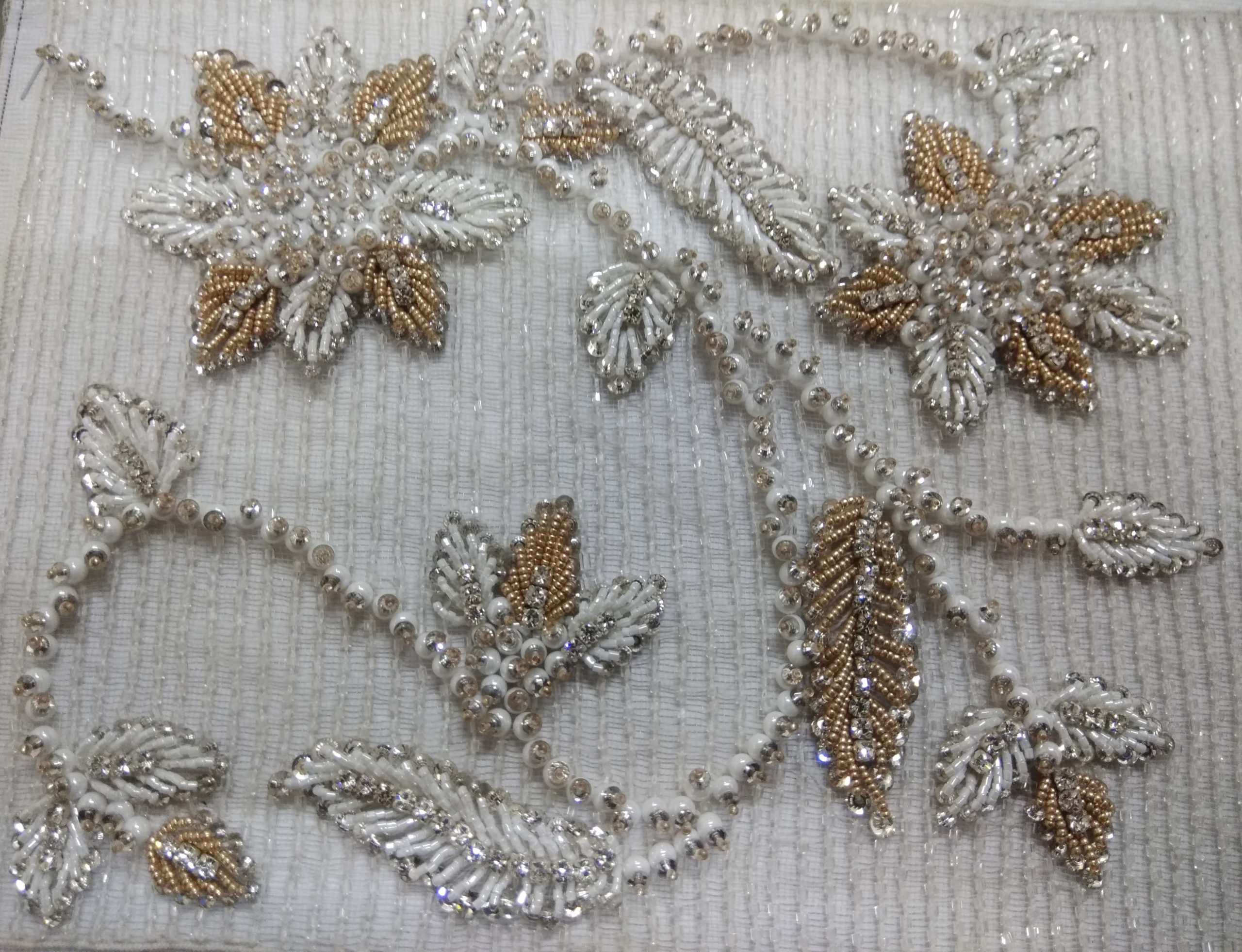
1. Understanding the Basics
Before diving in, familiarize yourself with the essential tools and materials for bead embroidery. These typically include:
- Fabric: A stable base fabric like cotton, velvet, or silk is ideal for holding the weight of beads.
- Beads: Seed beads, bugle beads, crystal beads, and more in various sizes, shapes, and colors.
- Embroidery Thread: Strong threads like Nymo, Silamide, or Fireline are preferred for their durability and ability to pass through beads multiple times.
- Needles: Beading needles are thinner and longer than regular sewing needles, allowing them to pass through beads easily.
- Scissors, Beading Mat, and Hoop or Frame: For cutting thread, organizing beads, and keeping the fabric taut.
2. Essential Techniques
- Backstitch and Split Stitch: These foundational embroidery stitches serve as the base for attaching beads, securing them firmly to the fabric.
- ** Peyote Stitch**: A popular off-loom bead weaving technique that can be used in conjunction with embroidery to create complex patterns and shapes.
- Stacked Bead Stitch: Layering beads on top of one another to create a dimensional effect, often used for flower centers or accents.
- Edging and Fringe: Adding beads along the edges of your work or creating decorative fringes to enhance the design’s movement and texture.
3. Design Inspiration and Planning
Sketch your design ideas beforehand or experiment freely as you go. Consider:
- Color Theory: Play with complementary and contrasting colors to create harmony or drama.
- Motifs and Themes: From florals to geometric patterns, choose a theme that resonates with your personal style or the intended recipient.
- Texture and Dimension: Vary bead sizes and shapes to add depth and interest to your embroidery.
4. Application and Finishing Touches
- Starting and Ending Threads: Secure threads well to prevent beads from coming loose over time. Knots can be hidden under beads or woven back into previous stitches.
- Building Layers: Layer beads over embroidered stitches or other beads to create rich textures and intricate patterns.
- Sealing the Back: Once completed, backing the embroidery with felt or another fabric not only protects the stitching and beads but also provides a professional finish.
5. Exploring Advanced Techniques
As you gain confidence, challenge yourself with more complex methods:
- Three-Dimensional Embroidery: Creating raised or立体 elements, like beaded flowers or creatures, that protrude from the fabric surface.
- Mixed Media Integration: Incorporating fabrics, sequins, metals, or found objects into your embroidery to add diversity and depth.
- Freeform Bead Embroidery: Allowing the design to evolve organically without a set pattern, often resulting in unique, one-of-a-kind pieces.
6. Displaying and Caring for Your Work
Your bead embroidery can be transformed into jewelry, wall hangings, or incorporated into clothing and accessories. To ensure longevity:
- Handle gently to avoid dislodging beads.
- Store in a dry place away from direct sunlight to prevent fading.
- Clean with a soft brush or gentle vacuuming to remove dust.
Bead embroidery is a deeply satisfying and endlessly creative pursuit, inviting you to explore your artistic side while preserving a tradition that spans centuries. With practice and patience, you’ll develop a unique style and the ability to translate even the most intricate visions into beautiful, wearable art pieces. So, embark on this embellished journey and elevate your embroidery to dazzling new levels.
Innovative Approaches and Contemporary Trends
As bead embroidery continues to evolve, artists are pushing boundaries, integrating new materials and techniques into their creations. Here are a few contemporary trends and innovative approaches to consider incorporating into your work:
1. Upcycling and Sustainable Materials
In a nod to sustainability, many artisans are repurposing vintage textiles, discarded clothing, or using eco-friendly beads made from recycled materials. This not only reduces waste but also adds a unique, storytelling element to the finished pieces.
2. Technology Integration
Advancements in technology have influenced bead embroidery as well. Some artists use computer-aided design (CAD) software to plan out intricate designs before translating them into beads. Others are experimenting with LED lights and microcontrollers to create illuminated beadwork, adding a futuristic twist to this traditional craft.
3. Mixed Cultural Influences
Globalization has led to a beautiful fusion of cultural motifs and techniques in bead embroidery. Artists are drawing inspiration from various ethnic traditions, blending African beadwork with Indian embroidery styles, or Japanese influences with Native American patterns, creating a harmonious global aesthetic.
4. Wearable Tech and Smart Embroidery
An emerging field combines bead embroidery with wearable technology. By embedding sensors, conductive threads, or small electronic devices into the embroidery, artists create interactive pieces that respond to touch, light, or sound, transforming accessories into functional art.
5. Micro Beading and Miniature Art
Miniaturization is another trend taking bead embroidery by storm. Tiny beads are meticulously placed to create hyper-realistic portraits, landscapes, or intricate patterns that require a magnifying glass to fully appreciate. This demands exceptional precision and patience but yields breathtaking results.
6. Collaborative and Community Projects
Collaborative bead embroidery projects are gaining popularity, where multiple artists contribute to a single piece or a series, fostering a sense of community and shared creativity. These collective efforts often result in large-scale installations or public artworks that celebrate diversity and unity.
7. Healing and Mindfulness
Bead embroidery is increasingly recognized for its therapeutic benefits. Many find the repetitive motion and focus required for this craft meditative, using it as a form of mindfulness practice. Some even embed healing crystals or sacred symbols into their work, enhancing the spiritual aspect of the art form.
Conclusion
By exploring these innovative approaches and embracing the ever-evolving trends in bead embroidery, you can continue to grow as an artist and contribute to the rich tapestry of this ancient yet dynamic craft. Remember, the true beauty of bead embroidery lies in its infinite possibilities for self-expression and creative exploration.